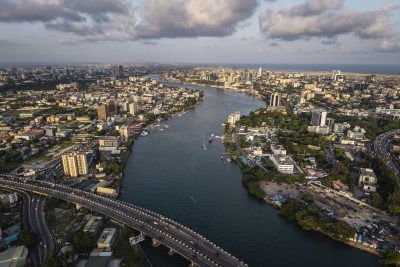Africa’s tourism industry is the fastest growing in the world. There were an estimated 33m visitors last year and the industry expects the growth to continue into the foreseeable future. In response, the construction of new hotels and expansion of established ones continues apace. But growth has not been evenly distributed, with former hot spots, such as Kenya, taking a rude knock. Sherelle Jacobs reports.
As travelling visitor numbers across Africa increase, hotel chains are expanding on the continent. High-end, mid-scale and budget accommodations are all under development targeting both business and recreational travellers and tourists. The tourism sector also looks healthy in leading African tourist destinations such as South Africa.
Nonetheless some countries are barely treading water: Kenya’s travel and tourism industry is sinking under the weight of security fears and crime, and countries such as Nigeria are failing to get sufficient momentum behind their embryonic travel industries – making for a mixed narrative about the current state of the continent’s travel and tourism sector.
According to a new report from Euromonitor International, sub-Saharan Africa’s tourism industry is among the fastest growing in the world. Between 1999 and 2013, international arrivals doubled to 36m in 2013.
There is also more growth on the horizon, according a report by W Hospitality Group, the 2013 Africa Pipeline Study. As of the start of 2013, hotel chains across the region had over 200 hotel projects in the pipeline; this equates to around 40,000 additional rooms.
For example, Marriott International, with 125 hotels across the region – making it the biggest hotel chain in Africa – intends to increase its number of rooms threefold to 75,000 in Africa and Middle East over the next six years and to have 30 new hotels in South Africa alone by 2020. It is also opening new hotels in Rwanda, Nigeria and Ghana before the end of the first quarter of 2015.
Budget and mid-scale hotels are also looking to gain a greater foothold in Africa, taking advantage of a rise in both domestic and business travellers from elsewhere in Africa.
For example, Accor wants to expand its budget traveller-focused ibis brand and its mid-scale Mercure and Novotel brands across Africa’s biggest cities including Nairobi, Lagos, Addis Ababa, Luanda, Accra and Cape Town. In all, 20 Accor hotels are being developed in Africa, which equates to 3,600 rooms. Mid-scale Park Inn is also working on 29 new hotels in Africa, which equates to 6,300 rooms.
South Africa has been enjoying positive growth in its tourist industry. Foreign arrival numbers broke records in 2013, reaching 10m, according to the Department of Tourism.
In the latest figures from Statistics SA, almost 14.9m foreign visitors arrived in South Africa last year, 10.5% more than 2012. Of this number, 9.6m were tourists, which amounts to a 4.7% year-on-year growth in tourist arrivals (which includes arrivals from the rest of Africa) and a 7.1% year-on-year increase in overseas arrivals (which excludes arrivals from the rest of Africa).
“South Africa’s tourism industry continues to show good growth, and we remain confident in the ongoing performance and sustainability of the sector,” said the Tourism Minister, Marthinus van Schalkwyk.
The number of arrivals from Europe grew 7% year-on-year to almost 1.5m in 2013. Growth in German visitors was 14.2% to over 300,000, from France 10.3% to over 130,000 and from Italy 10.6% to nearly 70,000. Arrivals from the UK, the biggest market for South Africa, barely grew, however – increasing 1% and lingering at around 440,000.
It is not all good news for Africa’s tourism industry, however. Kenya’s until now well-established travel and tourism industry is struggling. Tourism is an important part of the country’s economy – in 2011, it contributed 14% to economic output and employed 12% of the labour force.
However, foreign visitor figures fell 11% in 2013 and it is anticipated that it could slump to an even worse low this year. Kenya’s tourist revenue in 2011 was $4.7bn. Moody’s predicts the 2013 Westgate Mall attack alone could lose the country tourist revenue of up to $250m and tourism-related losses of around $57m a month are predicted this year by the Kenya Tourism Federation.
Want to continue reading? Subscribe today.
You've read all your free articles for this month! Subscribe now to enjoy full access to our content.
Digital Monthly
£8.00 / month
Receive full unlimited access to our articles, opinions, podcasts and more.
Digital Yearly
£70.00 / year
Our best value offer - save £26 and gain access to all of our digital content for an entire year!
 Sign in with Google
Sign in with Google 


